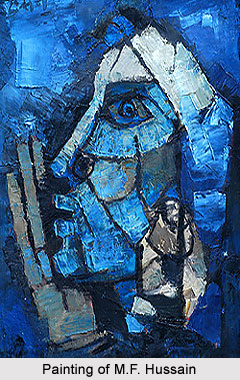 Modern Indian Painting constitutes various types of painters. In the recent times however, there have been a lot of women painters who have come along and have established themselves in the field of art and paintings. One of the famous names among the Indian women painter is Amrita Shergil. She is also called India`s Frida Kahlo and today is also considered an important personality of 20th century India. The legacy of Amrita Shergil stands in par with Masters of Bengal Renaissance, and is also the most expensive woman painter of India.
Modern Indian Painting constitutes various types of painters. In the recent times however, there have been a lot of women painters who have come along and have established themselves in the field of art and paintings. One of the famous names among the Indian women painter is Amrita Shergil. She is also called India`s Frida Kahlo and today is also considered an important personality of 20th century India. The legacy of Amrita Shergil stands in par with Masters of Bengal Renaissance, and is also the most expensive woman painter of India.
Presently she is amongst the Nine Masters whose work of art, in 1976 and 1979, was declared as art treasures by The Archaeological Survey of India. There are over 100 paintings of her that are currently displayed at National Gallery of Modern Art, Delhi.
During the British rule, there were Western Influences that started to make an impact on Indian art. Some artists inculcated a typical style that used the western ideas of composition, perception and realism to demonstrate Indian themes. Other painters like Jamini Roy, consciously drew inspiration from folk art. By the time India gained independence in the year 1947, there were several schools in India that provided access to modern ideas and techniques. Galleries were set to exhibit the paintings of these artists. Modern Indian art typically shows the influence of western style of art, which are very often inspired by Indian themes and images. Important artists are starting to gain international fame, initially among Indian Diaspora but later among non-Indians painting lovers as well.
Shortly after India achieved independence in 1947, the Progressive Group set up new ways to express India in the post-colonial period. The founders were six established artists like K. H. Ara, S. K. Bakre, H. A. Gade, M.F. Hussain, S.H. Raza and Francis Newton Souza, though the group was dissolved in 1956, it was overwhelmingly prominent in changing the idiom of Indian art. All major names in the artistic Diaspora were associated with the group. Among them, some who are still well known today are Bal Chabda, Manishi Dey, Mukul Dey, V. S. Gaitonde, Ram Kumar, Tyeb Mehta, and Akbar Padamsee. Other popular painters like Jahar Dasgupta, Prokash Karmakar, Narayanan Ramachandran, and Bijon Choudhuri helped enrich Indian art culture in India as well. These people are now icons of modern Indian paintings.
 Paintings in India got a huge boost during the liberalization periods in the early 1990s.
Artists from various fields started to bring different types and styles of work. Art work started to spread and was not only confined to academic traditions but also went well beyond that. Artists introduced new concepts which have hitherto not been seen in Indian art. Devajyoti Ray introduced new genre of art called Pseudo-realism. This is a special type of art, which was entirely developed on India soil. Pseudo-realism takes into consideration the Indian concept of abstraction and uses it to transform regular scenes of Indian life into fantastic images.
Paintings in India got a huge boost during the liberalization periods in the early 1990s.
Artists from various fields started to bring different types and styles of work. Art work started to spread and was not only confined to academic traditions but also went well beyond that. Artists introduced new concepts which have hitherto not been seen in Indian art. Devajyoti Ray introduced new genre of art called Pseudo-realism. This is a special type of art, which was entirely developed on India soil. Pseudo-realism takes into consideration the Indian concept of abstraction and uses it to transform regular scenes of Indian life into fantastic images.
In the post-liberalization India, there are many Indian artists who have set themselves in the international art market like the abstract painter Natvar Bhavsar and sculptor Anish Kapoor whose mammoth post-minimalist artworks have garnered interest and attention for their sheer size. There are also numerous galleries and art houses that have been established in Europe and USA to showcase Indian artwork talents.





